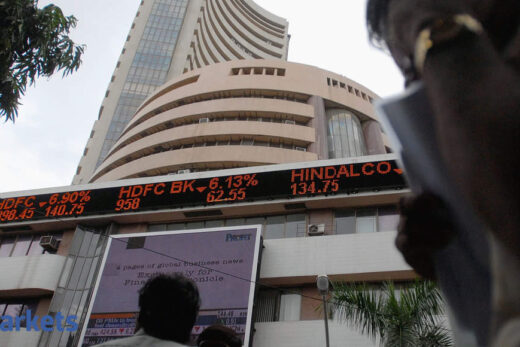The markets have cooled off but 21st January 2021 is going to go down in history books for reaching 50,000 on the Sensex. You have been an old hand at the Bombay Stock Exchange. Tell us some of the anecdotes that you recall of the previous years.
I entered the market in 1990 and every time a major event has happened in my life, I remember where the Sensex was. When I got married, it was at 3500 and now we are at 50,000. The best is just about to begin for the market and the country as a whole. It is a great landmark and it is truly rewarding for investors who have been in the market for the last 20-30 years. Huge wealth has been created. Do not go just by what the actual Nifty and Sensex returns have been. By investing in midcap stocks and select businesses with quality management, one has made a tiny fortune for the last 20-30 years.
Now with the entire complexion of the economy changing, new generation businesses getting listed and the extremely low interest rates and high level of retail interest coming in, one could see very good times ahead for the stock market. Of course, there will be ups and downs and corrections but my belief in investing in equity for the long term has not only fructified but also got stronger with this particular milestone.
There are many who did not even participate in the rally from the March lows and have not seen as many gains as they could have had they either stayed invested or bought the March decline. How would you advise millennials if they want to enter the markets at these highs.
Do not wait, that is what I would say. The highs and the bottoms will be there. You may have started your investing journey at the top, as did I, but if you have the capability to gradually divert your savings into equities at various points of time and do it with a degree of consistency and discipline and not make sharp moves like selling off the full portfolio or mortgage house and buy shares, then over a 5-10-15-20 year period there are still great scope to create wealth in this particular market.
You have to start somewhere and if you are underweight at this point of time, today is as good a day to start. Buy the nice quality company, make sure that you have got a good balance as far as sector-wise weightages are concerned and then every time you see a correction or have extra savings to deploy, start deploying it in good quality equity and just do basic risk management. Over a 5-10-15 year period, it will become a really huge chunk of your savings and that itself provides a great deal of security and financial comfort and let’s you take decisions which you cannot otherwise take, if you do not have this kind of financial fallback.
Right now financials have a 35-40% weightage. Which sector do you see having this kind of weightage on the index going forward over the next few years?
Well that is an interesting question and very relevant as well for a long- term investor with a 5-10 year view. It is difficult to answer at this point of time but insurance is certainly one sector which will get more and more mainstream and it may get higher weightages within the Sensex and the Nifty. There is a LIC listing also and that may have most weightage as far as insurance is concerned.
Also I see some of the new age digital businesses which are yet to be listed but may be listed like Flipkart or Zomato or some of the others unicorns which are looking at getting listed and may be even Nykaa. Those are the ones which the market will fancy.
I am not certain that a 40% weightage for banks is really sustainable going forward. Those are peak weightages and there may be corrective outperformance in banks per se but as a sector, I do not see a significantly higher weightage than what it is at present. New age businesses will come into focus and gain further traction and further proportion of the Sensex and Nifty weights.
For those who have not participated in this market, what should be a good entry point? Would you judge it by percentage or would you judge it by Sensex level?
I think we have got historical parameters to value stocks but there are certain key differentiators. One, interest rates are at all- time low; two, the kind of FII wave that we are seeing and the kind of money that is going out from developed markets into emerging markets, will gather more momentum as we go ahead.
Markets can be overvalued far longer than you can avoid investing in them. So at some point of time, if you are waiting on the sidelines you will throw in the towel and invest because that is what the market does. It tends to lure you eventually and it is alright to say that we are high at this point of time and you may make a mistake investing at these levels as well, but if you have enough liquidity, if you have sources of savings coming up, then you can cover a mistake or two by investing at the top. As such nobody gets this right and I started my journey investing at the highs but thereafter, you average as the market goes along and if you buy selectively good quality companies then you are fine. But just because the market has reached a new peak and because valuations are on the higher side, I do not think that there will be a correction. Corrections happen with bad news and when structural changes take place. Corrections also happen when a risk-off trade globally starts taking shape and when you see that happen, one cannot predict. So there is lesser risk in remaining invested than trying to time the markets.
So, one does not really know whether these are the right levels to invest or not, all that one can say is that at least on the horizon, nothing negative is happening. If you are more or less overly invested and well invested, then maybe you could have a slightly contrarian play and take some money off the market at this point of time, book some profits that may be sensible, be in cash and that certainly is a strategy which works but it is a far more difficult decision if you are on the sidelines and you have a huge chunk of cash to invest.
But these are all theoretical. In my circle, with our clients and the people we interact with, most investors are more or less fully invested or they may be looking at investing their incremental savings into it. So I do not know how many investors are still there who are sitting on a lot of cash and who want to invest. Even the trading volumes have been on the higher side and at these levels of the market, I would say that is not a question which many investors or traders are asking. The question they are asking is if it is a good level to book some profits or to remain invested as there is always a sense of fear at such elevated levels.
What is your view on Tata Motors?
A lot of investors and traders are getting very excited on Tata Motors and it may be due to their electrical vehicles endeavour — be it in partnership model or by themselves or through technology from their subsidiary company JLR. Within the entire auto industry, Tata Motors is best placed in terms of access to technology, in terms of preparedness for the EV revolution and that is why it is getting that kind of a premium valuation at this point of time.
Better volume numbers from JLR are suddenly helping the stock and the management’s target to reduce their debt seems more and more likely. Also, the domestic market has performed well for Tata Motors but most importantly, it is the buzz around them launching new electric vehicles or a partnership or technology coming in from JLR, which has captured the imagination of investors and traders at this point of time.
Tata Motors tends to have spectacular rallies. It is a cyclical business and the levels from where it has moved up, were extremely attractive. It has been a huge underperformer versus the market and it is seeing a catch up at this point of time. But these kinds of stocks are very difficult to get a handle on from an investment perspective. The momentum is good and it is great for traders or for some investors to get into the stock even at this point of time or maybe even at a correction and then ride this particular momentum on any positive news from the company in terms of a tie up or a launch of electric vehicle or transfer of technology or anything on those parameters. In that case, the stock could trade even higher because there is a huge disruption taking place in the auto industry and most of us sitting here in India are just not able to participate in that.
What about Bajaj Finance earnings?
I was present at the conference call and the management was very upbeat. What struck me is that this year whatever problems has been there will write itself off completely. Going forward, after Q4, the NPA provisioning will be normalised. They will pick up in terms of new clientele and will start to lend more aggressively. They have been structural changes as far as the cost structure is concerned and they will benefit from a better cost to income ratio going forward.
If we give the management relaxation for one year — this particular year has been extremely difficult for the company and the sector as a whole — FY22 onwards you will see the company going back to their 35-40% type of bottom line growth rate. It is a great secular story and premium valuations are completely justified. In a post Covid world, a lot of consolidation has taken place in the banks and NBFCs and Bajaj Finance will benefit from that. Also, they have made great moves as far as low interest costs are concerned and many other positives are going for the company as some value gets built into the payment gateway which they are about to launch. That will be an added positive.
I need to disclose that we and our clients are invested in Bajaj Finance and to that extent, my views could be a bit prejudiced. Nonetheless, it is a great story to invest in for a 3-5-year period.



